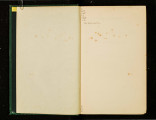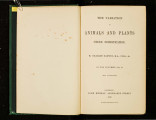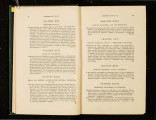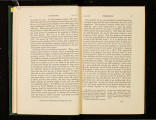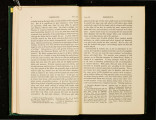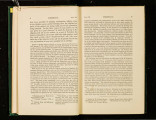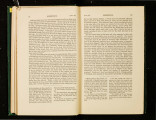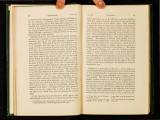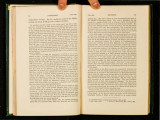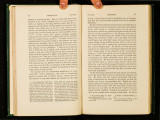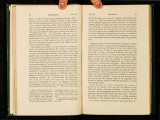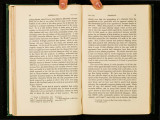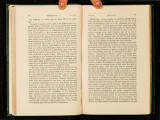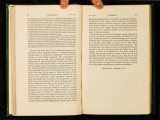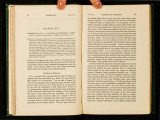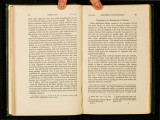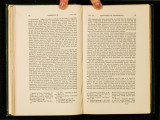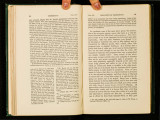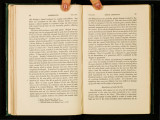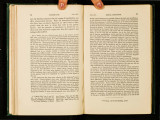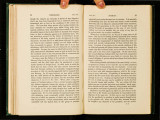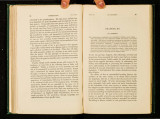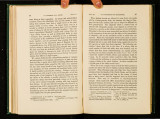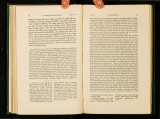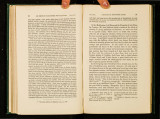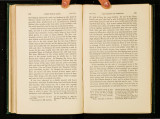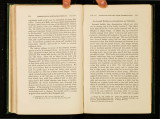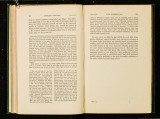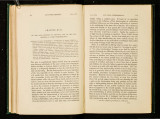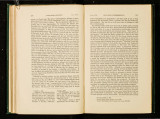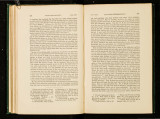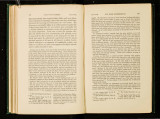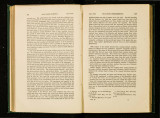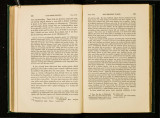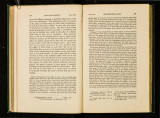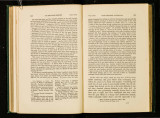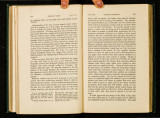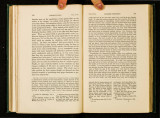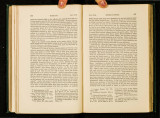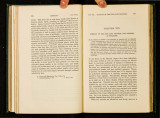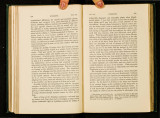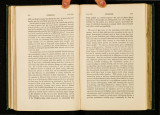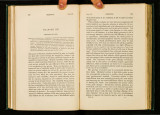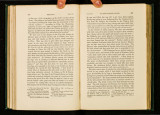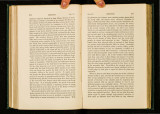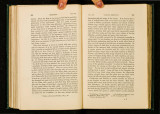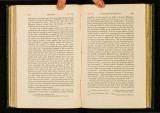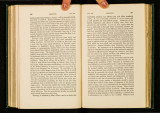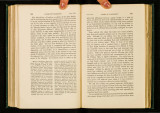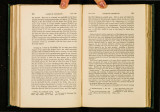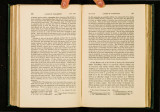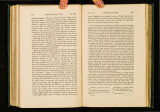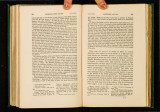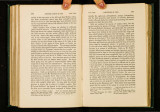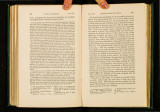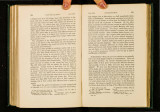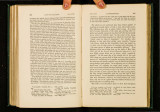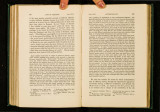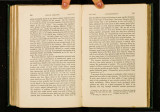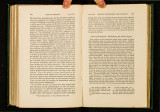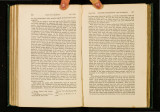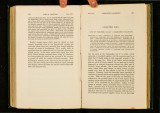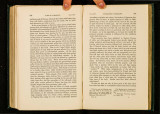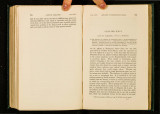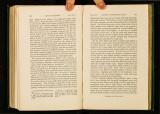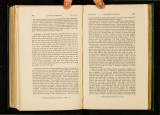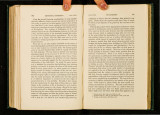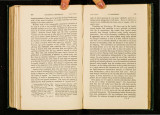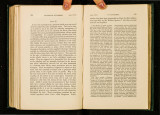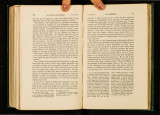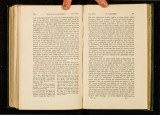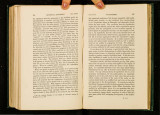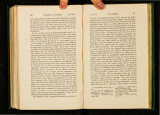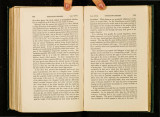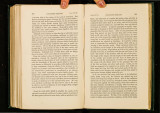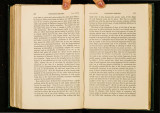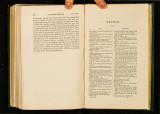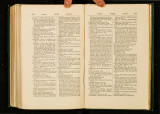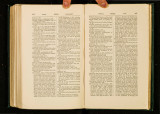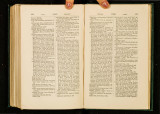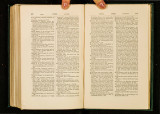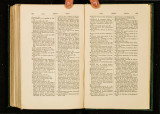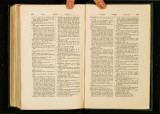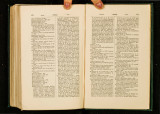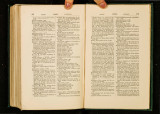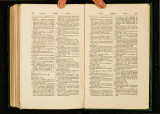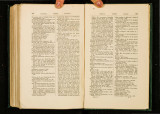| OCR Text |
Show 68 INHERITANCE. CHAP. XIV. male pheasant, judging fl•om Mr. Hewitt's descriptionsP a~d from the hybrids which I have seen, preponderates over ~he domestw fowl; but the latter, as far as colour is concerned, has considerable power of ~ransmission, for hybrids raised from five differently col~ured hen.s ~ffered greatly in plumage. I formerly examined some curwus hybnds m the Zoological Gardens, between the Penguin variety of the common. duck and the Egyptian goose ('l'adorna .LEgyptiaca); and although I Will ~ot assert that the domesticated variety preponderated over the natural species, yet it had strongly impressed its unnatural upright figure o~ these hyb1:ids. I am aware that such cases as the foregoing have been ascnbed by vanous authors, not to one species, race, or individual being pr~potent over the other in impressing its character on its crossed offsprmg, but to such rules as that the father influences the external characters and the mother the internal or vital organs. But the great diversity of the rules given by various authors almost proves their falseness. Dr. Prosper Lucas has fully discussed this point, and has shown 18 that none of ~he Tules. (~nd I could add otheTs to those quoted by him) apply to all ammals. Stmilar Tules· have been enounced foT plants, and have been proved by Gartner 19 to be all erroneous. If we confine our view to the domesticated Taces of a single species, or peThaps even to the species of the sa~e gen~1s, some such Tules may hold good; for instance, it seems that m reCiprocally crossing various breeds of fowls the male generally gives colour.; w but conspicuous exceptions have passed under my own eyes. In she~p It seems that the ram usually gives its peculiar horns and fleece to Its crossed offspring, and the bull the presence or absence of horns. . In the following chapter on Crossing I shall have occasiOn to show that certain characters are rarely or never blended by crossing, but are trans-mule and the hinny, I am aware that this has generally been attributed to the sire and dam trftnsmitting their characters differently; but Colin, who bas given in his ' Traite Pbys. Comp.,' tom. ii. pp. 537-539, the fullest description which I have met with of these reciprocal hybrids, is strongly of opinion that the ass preponderates in both crosses, but in an unequal degree. This is likewise the conclusion of Flourens, and of Bechstein in his 'Naturgeschichte Deutschlands,' b. i. s. 294. The tail of the hinny is mueh more like that of the horse than is the tail of the mule, and this is generally accounted for by the males of both species transmitting with greater power tbis part of their structure ; but a compound hybrid which I sa\V in the Zoological Gardens, from a mare by a hybrid ass-zebra, closely resembled its mother in its tail. 11 Mr. Hewitt, who bas had such great experience in raising these hybrids, says (' Poultry Book,' by ~· Tegetmeier, 1866, pp. 165-167) that Ill all the head was destitute of wattles, co~b, and ear-l::tppets ; and all closely resembled the pheasant in the shape of the tail and general contour of the body. These hybrids were raised from hens of several breeds by a cock-pheasant; but another hybrid, described by Mr. Hewitt was raised from a ben-pheasant by a ~ilver-laced Bantam cock, and this possessed a rudimental comb and wattles. 18 • L'Hered. Nat.,' tom. ii. book ii. ch.i. 19 'Bastarderzeugung,' s. 264:-266. Naudin ('Nouvelles Archives . du Museum,' tom. i. p. 148) has arnved at a similar conclusion. 20 'Cottage Gardener,' 1856, PP· 101, ' 137. CHAP. XIV. PREPOTENCY OF TRANSMISSION. 69 mitted in an unmodified state from either parent-form; I refer to this fact here because it is sometimes accompanied on the one side by prepotency, which thus acquires the false appearance of unusual strength. In the same chapter I shall show that the rate at which a species or breed absorbs and obliterates another by repeated crosses, depends in chief part on prepotency in transmission. In conclusion, some of the cases above given,-for instance, that of the trumpeter pigeon,-prove that there is a wide difference between mere inheritance and prepotency. This latter power seems to us, in our ignorance, to act in most cases quite capriciously. The very same character, even though it be an abnormal or monstrous one, such as silky feathers, may be transmitted by different species, when crossed, either with prepotent force or singular feebleness. It is obvious, that a purely-bred form of either sex, in all cases in which prepC?tency does not run more strongly in one sex than the other, will transmit its character with prepotent force over a mongrelized and already variable form.21 From several of the abovegiven cases we may conclude that mere antiquity of character does not by any means necessarily make it prepotent. In some cases prepotency apparently depends on the same character being present and visible in one of the two breeds which are crossed, and latent or invisible in the other breed; and in this case it is natural that the character which is potentially present in both should be prepotent. Thus, we have reason to believe that there is a latent tendency in all horses to be dun-coloured and striped; and when a horse of this kind is crossed with one of any other colour, it is said that the offspring are almost sure to be striped. Sheep have a similar latent tendency to become dark-coloured, and we have seen with what prepotent force a ram with a few black spots, when crossed with white sheep of various breeds, coloured its offspring. All pigeons have a latent tendency to become slaty-blue, with certain characteristic marks, and it is known that, when a bird thus coloured is crossed with one of any other colour, it is most difficult afterwards to eradicate the blue tint. A nearly parallel case is offered by those black bantams which, as they grow 21 See some remarks on this head with respect to sheep by :Mr. Wilson, in 'Gardener's Chronicle,' 1863, p. 15. |




